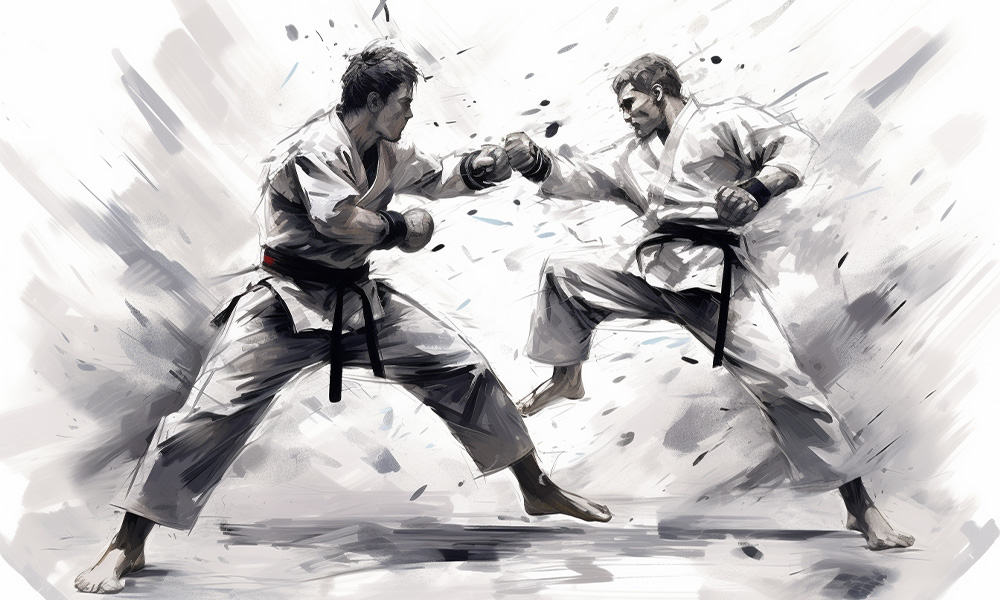
I’ve been practicing taekwondo for years, competing in local and national tournaments, and I still remember my first match—heart pounding, trying to land a clean kick while keeping track of the score. Understanding how scoring works in taekwondo competitions can make watching or competing less confusing and way more exciting.
Whether you’re a new student, a parent, or a fan, this guide breaks down the rules for sparring, poomsae, penalties, and more, based on the latest World Taekwondo (WT) guidelines. Let’s get into it!
What Are Taekwondo Competitions?
Taekwondo competitions test skill, speed, and strategy in two main formats: sparring (kyorugi) and poomsae (forms). Sparring is a full-contact, one-on-one match where you score points by landing kicks and punches. Poomsae is a solo or team performance of choreographed techniques against imaginary opponents.
Competitions happen on an 8-meter octagonal mat, and fighters wear a white dobok (uniform). To keep things fair, competitors are grouped by gender, age, and weight class—eight categories for men and women in Olympic events, like flyweight (-58kg for men, -49kg for women) to heavyweight (+80kg for men, +67kg for women).
Sparring: Landing Points with Precision
Sparring is the heart of taekwondo competitions, where two fighters face off to score points by striking legal target areas: the trunk (torso) and head. Matches last three rounds, each two minutes, with a one-minute break between rounds. Here’s how you score, based on WT’s rules:
- 1 point: Punch to the trunk protector or a straight kick to the trunk.
- 2 points: Turning kick (e.g., spinning back kick) to the trunk.
- 3 points: Kick to the head (any part above the collarbone).
- 4 points: Turning kick to the head.
Only kicks using the foot below the ankle and punches with a closed fist to the trunk count. Head punches, groin strikes, or attacks below the waist are illegal. I once thought I’d scored with a fancy sweep, only to learn it’s not allowed—lesson learned
Matches can end early in a few ways:
- 20-point gap: If one fighter leads by 20 points at the end of the second round or during the third, the match stops.
- Knockout (KO): If a fighter can’t continue after a legal strike, the referee declares a KO after a 10-second count. A knockdown happens when any body part (except the feet) touches the ground due to a strike, but the fighter can recover if they’re fit to continue after the count reaches eight.
- Disqualification: Too many penalties or serious rule violations can end a match.
For the 2024 Paris Olympics, WT introduced a best-of-three format. The score resets each round, and you need to win two of three rounds to take the match. If a round ties, judges decide the winner based on higher-value techniques (e.g., head kicks) or most hits registered by the electronic scoring system. No more golden point (sudden-death) rounds in this format, though some non-Olympic events still use them.
Poomsae: Mastering the Art of Form
Poomsae is all about precision and control. You perform a set sequence of movements—blocks, kicks, and strikes—alone, in pairs, or as a team, judged on how well you execute each technique. No protective gear is needed, just your dobok, and you perform on a mat to referee commands.
Judges score poomsae out of 10, split between:
- Accuracy (4 points): Correct stances, techniques, and sequence. Mistakes like skipping a move or losing balance hurt your score.
- Presentation (6 points): Speed, power, rhythm, and expression. It’s like telling a story through your movements.
I remember nailing a poomsae at a state tournament, feeling every kick snap just right—until I forgot one stance and saw my score drop. Judges notice everything! WT’s rules emphasize both technical execution and artistic flow, ensuring fairness across events.
Scoring Systems: Electronic vs. Traditional
Taekwondo uses two scoring methods: electronic (Protector and Scoring System, or PSS) and traditional (judge-based).
Electronic Scoring (PSS)
Most major competitions, like the Olympics, use PSS. Sensors in the trunk protector, headgear, and WT-approved sensing socks detect legal strikes. Points appear instantly on a scoreboard, making it fast and accurate.
For example, a head kick registers 3 points if the sensor picks up sufficient force. Judges manually score punches and turning kicks using handheld devices, as sensors don’t always catch them. PSS reduces human error but can be pricey and occasionally glitches if sensors misread light contact.
Traditional Scoring
Smaller tournaments often rely on judges to score strikes visually. Three or four judges watch closely, and a point is awarded when at least two (or three in some setups) agree on a valid hit. It’s less accurate than PSS—judges might miss a quick kick—but it’s affordable and adds a human touch. I’ve seen judges debate a close call, and it taught me to make every strike undeniable.
Video Replay
Coaches can challenge missed points or errors via instant video replay. A jury reviews the footage, and decisions are final. This system, updated in WT’s rules, ensures fairness, especially in tight matches.
Penalties: Playing by the Rules
Penalties keep matches safe and fair. WT uses two types:
- Kyong-go (warning): Minor infractions, like stepping out of the ring, delaying the match, or light contact to an illegal area (e.g., below the waist). Two kyong-gos equal one gam-jeom.
- Gam-jeom (point deduction): Serious violations, like kicking a fallen opponent, grabbing, or unsportsmanlike conduct (e.g., arguing with the referee). Each gam-jeom gives your opponent one point.
In Olympic best-of-three matches, five gam-jeoms in a single round mean your opponent wins that round. In standard WT events, three gam-jeoms can lead to disqualification. Common infractions include attacking the spine, excessive force, or crossing the boundary line with both feet. Staying disciplined is key—I’ve seen fighters lose matches over avoidable penalties.
Para-Taekwondo: Scoring for Everyone
Para-taekwondo lets athletes with physical impairments compete in kyorugi (sparring) and poomsae, with rules adapted for fairness. Competitors are classified by impairment type (e.g., limb deficiency, wheelchair use) and grouped into sport classes.
Kyorugi rules are similar to standard sparring but may limit head kicks for certain classes, focusing on trunk strikes. Poomsae scoring mirrors regular rules, emphasizing accuracy and presentation, with adjustments for mobility. Para-taekwondo follows WT’s inclusive ethos, and I’ve watched these athletes inspire everyone with their skill and grit.
Weight Classes and Equipment
Fairness starts with weight classes. Olympic categories range from flyweight to heavyweight, ensuring fighters compete against similar-sized opponents. All competitors wear a dobok, trunk protector, headgear, forearm and shin guards, gloves, sensing socks (for PSS), and a mouthguard.
Male fighters must wear a groin guard under the dobok. Jewelry and glasses are banned, and nails must be trimmed to avoid injury. WT-approved gear, like sensor-equipped protectors, is mandatory for major events.
Why Scoring Matters
Understanding scoring isn’t just for competitors—it makes watching taekwondo more fun. You’ll spot why a head kick earned 3 points or why a fighter got a warning for stalling. It also helps you train smarter, focusing on high-value techniques like turning kicks.
My first tournament taught me to aim for clean, powerful strikes, not just wild swings. Knowing the rules builds confidence, whether you’re stepping into the ring or cheering from the sidelines.
Get Involved
Taekwondo scoring might seem tricky at first, but it’s all about rewarding skill and strategy. Want to dive deeper? Check out the World Taekwondo website for official rules or visit a local tournament to see the action up close. If you’re training, ask your instructor about practicing high-scoring techniques or competing in a beginner event. For more taekwondo tips, explore our guides on training, belts, and techniques.

